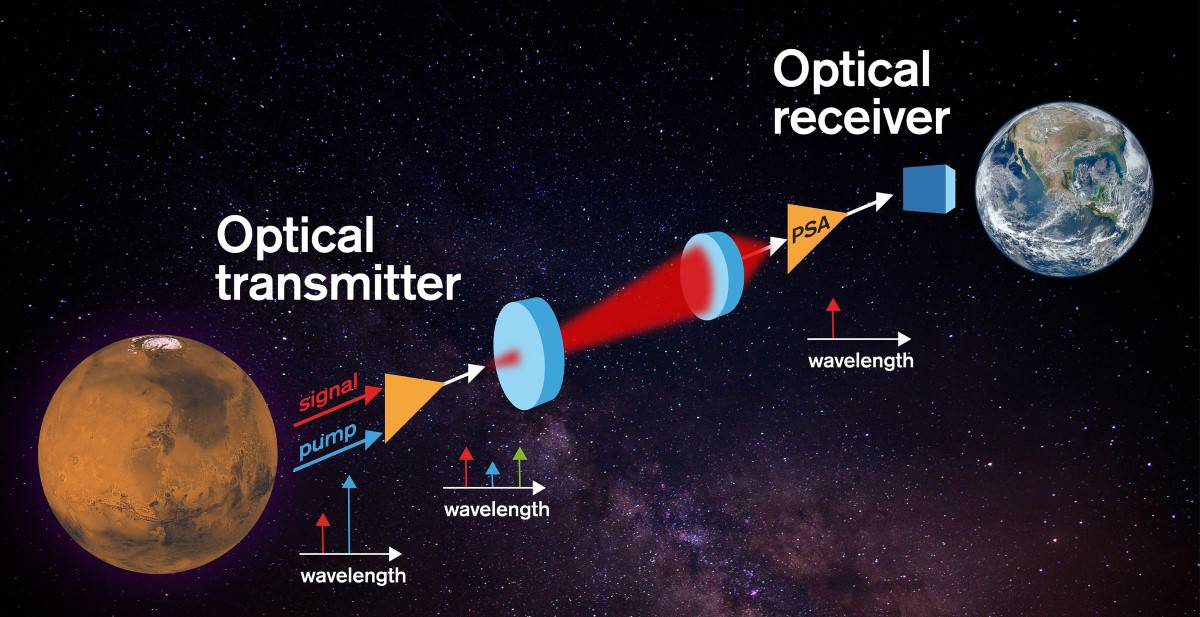
The most sensitive receiver to date for picking up optical signals in free space has been designed and demonstrated by researchers in Sweden. Peter Andrekson and colleagues at Chalmers University of Technology say they achieved this “unprecedented” sensitivity of one photon per bit of information in their receiver using a novel approach to signal preparation, combined with virtually noiseless amplification at the receiver. Their technique could have important implications for future space missions.
As space agencies seek to both expand their scope of exploration, and improve the data outputs of their satellites, existing radio-based communications systems are struggling to keep up. To enable operation at higher data rates, and transmissions across larger distances, optical signals are now increasingly being considered over radio waves, owing to their lower power losses during propagation. All the same, losses can be substantial in the vast distances of space. To realize higher transmission rates using as few photons as possible, receivers with the highest possible sensitivities are critical for success.
To achieve this, Andrekson’s team introduce a new setup in which data are first encoded onto a signal light wave, then combined with a continuous pump light wave at a different frequency. When these waves are passed through a nonlinear optical fibre, they then generate a third “idler” wave. Afterwards, all three waves are amplified to the desired output power, and launched into free space. At the receiving end, the depleted signal is captured in an optical fibre, then amplified by a phase-sensitive optical amplifier – a device unique in adding almost no noise to signals. Finally, the restored signal reaches a conventional receiver, where the original information can be recovered.
Room-temperature operation
Currently, even the most sophisticated free-space optical communications systems can only run at speeds of under 1 Gb/s, and require ultracold temperatures to operate. In contrast, the system designed by Andrekson’s team achieved a receiver sensitivity of close to one photon per bit of information at room temperature, enabling a data transmission rate as high as 10.5 Gb/s. In addition, the system relies on straightforward techniques for signal modulation, processing, and error calculation. This means it could easily be scaled up to accommodate higher data rates.

Down to earth
Through further theoretical calculations of the sensitivity of their technique, Andrekson and colleagues concluded that it is the best possible approach to transmission across a broad range of data rates. If integrated into the communications systems of real space missions in the future, their approach could hasten the transition from radio to optical signals for transmissions across large distances. This could lead to operational improvements to future missions to distant parts of the solar system; the transfers of data between satellites; and the monitoring of Earth’s surface using the optical technique LIDAR.
The research is described in Light: Science & Applications.



